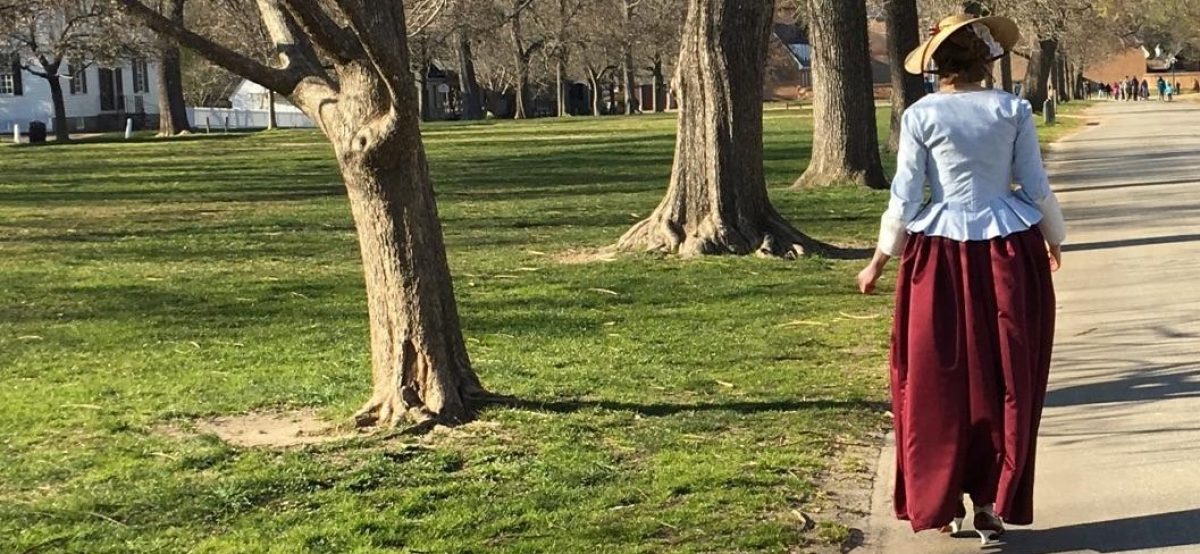There was a big sale on linen back in March or April so I went to the fabric store and quite literally bought it by the bolt. 100% linen is a more expensive fabric, especially compared to my normal recycled bed sheets, but it is the king of all fabrics in my opinion. Not only is it actually historically accurate, it also is a natural fiber which means it is breathable and cool in the summer months. The more wash linen, the softer it gets so it makes great shifts and petticoats, and it’s also incredibly strong and durable so it will last a lot more wears than other fabrics. Like I said, king of the fabrics.
Part of costuming on a budget sometimes means I use less desirable materials because they are cheaper, but another great way to keep in budget is just to wait for sales or use coupons. This isn’t a groundbreaking tip, but it really makes a difference.
So with my yards and yards of newfound sale linen, I got to work. First, I made myself two new shifts and an 18th century petticoat because these are things I needed made out of linen the most. My previous shift and petticoat were made of a poly/cotton blend which meant that they were really hot to wear in the summer. I still kept them, despite their polyester-ness, because they still work on days that aren’t as hot and it is always nice to have extra!

I made the shifts without sleeves, which is not accurate for the 18th century. I decided not to go for accuracy though so that I could use the extra fabric for other projects and also so I could make an “era-neutral” shift. Shifts or chemises are used in all historical eras and while they did change slightly overtime the basic idea stayed the same so I wanted something that I could easily use with any of my historical costumes. 18th century shifts have sleeves, but Victorian ones don’t, so I just left the sleeves off. Since the shift is the bottom layer of clothing no one sees it so I don’t mind this glaring inaccuracy for some eras.
From there I started making Edwardian undergarments to go with the corset I had just made. For the Edwardian era I needed a corset cover and a petticoat. A corset cover is basically a top which goes over the corset to help smooth out the hard edges of it so you don’t see them through the gown and an Edwardian petticoat is shaped very differently from the 18th century petticoats I have so I couldn’t reuse what I already had.
For the corset cover, I went for what is historically known as a handkerchief corset cover. It was called this because women could quite literally use large handkerchiefs to make some of these. Basically you cut the fabric (or handkerchiefs) into large triangles and connect those with some pretty insertion lace to make a kind of tank top shape.


I then put some hooks and eyes on the front for closures and it was done! It’s a simple corset cover but it does the job and I am very happy with how it turned out.



Sadly, I didn’t take any photos of the process of making the petticoat, mostly because I was just winging it. I didn’t have a pattern and decided that it looked simple enough so I just kind of went for. I didn’t right anything down so I don’t know if I could ever remake it but I remember I basically cut some very large and skinny triangles so make a kind of skirt shape. It was a very inexact science but it worked and I am happy with the result.


Now happily clad in my linen I was was almost ready to finally wear my antique dress and see what it would have looked like on someone more than 100 years ago. The big reveal coming soon!
Love always,
Victoria
